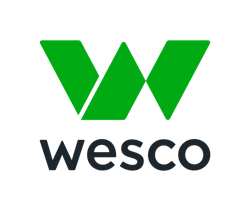Over the years, workplace safety has evolved from a focus on employee behavior and OSHA compliance to a focus on culture, safe conditions, and conformance with organization objectives. However, in order to achieve world-class safety performance, safety must be integrated into the culture of the enterprise. Companies that demonstrate a commitment to safety, and the well-being of their employees’ lives, are actively demonstrating their dedication to a workplace culture that values health and safety. Overall, the organizations that prioritize safety and a “people first” approach rise to the top.
Read on to hear her thoughts on safety, innovation, and the evolving nature of safety services.
What is your perspective on the evolution of safety — particularly, how it has evolved over the past decade?
There has been a lot of positive change in safety over the last 10 years, starting with companies intensifying investments in support of enterprise-level comprehensive safety cultures. This is thanks to deeper regulatory understanding and enhanced awareness of the role employers play in keeping employees safe from accident, illness, and death. And even more specific dimensions, such as manufacturers developing personal protection equipment (PPE) that is multipurpose, comfortable, and even stylish, which results in increased compliance.
Overall, technology is improving workplace safety by fundamentally changing how training, monitoring, reporting, and worker’s compensation are done. Employees can take advantage of new technologies to manage risk and improve real-time high-speed communication more effectively. We now see that the pandemic has challenged assumptions about worker safety, health, and wellbeing, and has helped to intensify the focus corporations place on mitigating risk.
What new technologies are you excited about?
The possibilities brought about by new technologies are endless, and their potential for expanding coverage and improving compliance and effectiveness are exciting. Advances in technology have made safe work practices increasingly achievable.
I am particularly excited by the multipurpose application possibilities of security cameras that can also generate critical safety data, and robotics and virtual reality technologies that will continue to help increase access to education and assist in avoiding injuries or fatalities. I also see great potential in the personalized and empowering benefits of wearable technology with the ability to track biometrics, read bar codes, and generate alerts if there has been an exposure to toxic elements.
This technology is not only improving the effectiveness of safety programs and reducing risk, but it can also improve employees’ awareness of how much employers care about them and their teams.
What advances in safety training are you seeing now?
Virtual reality has great potential to change how training is delivered and also change the training experience as a whole, making training itself even safer. For example, by delivering virtual training, employees won’t be exposed to the conditions that they need to be trained in, so training can be conducted in a safe place in an interactive way.
Advances in safety training will give employers the ability to create consistent safety cultures across multiple locations and provide the tools that improve compliance and reporting. Having timely access to information can increase the reach and coverage of safety programs and decrease the overall cost of those programs. These are all key elements of an effective safety program.
How does the culture of safety align with an engaged corporate culture?
Implementing an effective safety culture requires bringing together levels within an organization to work on a common goal as important as keeping people safe and healthy. So, employees see firsthand the investments and steps employers take to protect them from injury, illness, and death. This can help increase employee engagement, job satisfaction, and a sense of community, ultimately helping to strengthen the corporate culture of an organization.
At Wesco, we lead by example, not only through our 100 years of excellence and experience, but we have helped our customers evolve their own safety culture. As a company, we treat the strength of our safety culture as a top priority and an integral part of what we do and who we are. And that is why Wesco can deliver this type of value to the customers we serve.
What can clients expect when they partner with Wesco? How can Wesco help clients strengthen their own safety processes and procedures?
Clients can expect a true safety management partner — a safety expert — able to deliver a custom solution that includes a deep and broad product portfolio with connected solutions, a customizable set of safety services, and a tech-enabled supply chain.
We leverage our in-depth knowledge and relevancy in multiple product categories, regions of the world, and markets, to help our customers deploy consistent safety programs across multiple locations and globally. We operate in over 50 countries, so we understand our customer markets. And we want to leverage this deep knowledge to develop optimal safety solutions for them and their teams.
As a global leader in electrical, communications, and utility distribution and supply chain services, Wesco is ready and able to help you navigate business complexities. Learn more about safety services at Wesco.
Sponsored by:


